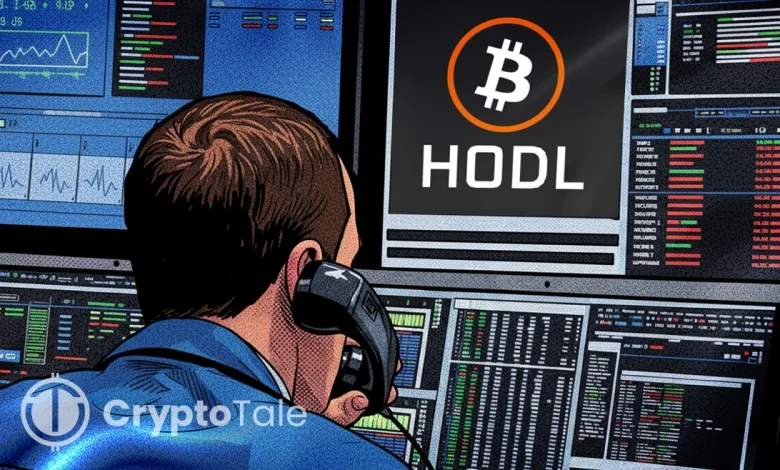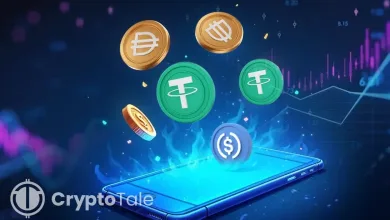B Hodl Debuts on AQSE to Build Bitcoin and Lightning Model

- B Hodl raised £15.3M at IPO and is listed on the AQSE Market with the ticker HODL.
- The firm will acquire Bitcoin for its treasury and Lightning nodes to earn routing fees.
- Its hybrid strategy blends transparency with Bitcoin exposure and a real network system.
B Hodl Plc, a newly established British company focused on Bitcoin, raised £15.3 million ($20.7 million) in its initial public offering and listed on the Aquis Stock Exchange Growth Market on Monday. Shares began trading at 8 a.m. under the ticker “HODL,” positioning the firm as the first listed British company built exclusively for Bitcoin accumulation and Lightning Network revenue generation.
Aquis, home to fewer than 100 growth companies with a combined market capitalization below £5 billion, provides a lower-cost alternative to the London Stock Exchange but operates with smaller liquidity.
Fundraising and Market Debut
The listing followed a capital raise of £15.3 million before expenses through the issue of 109,537,520 new shares priced at £0.14 each. The raise included £13.3 million from a direct subscription for 95,251,802 shares and an additional £2 million from an oversubscribed WRAP Retail Offer run by Winterflood Securities. The WRAP offer closed early due to strong demand and added 14,285,718 shares to the issue. The new ordinary shares rank equally with existing shares, including dividend and distribution rights.
At the opening of trading on AQSE, B Hodl shares were priced at 17.5 pence, valuing the business at about £24.5 million. The firm stated that the funds would be deployed primarily to acquire Bitcoin while also expanding operations through Lightning Nodes. These nodes form payment channels designed to make Bitcoin transactions faster and cheaper.
Business Strategy and Leadership
B Hodl describes its mission as accumulating Bitcoin in its treasury while simultaneously creating income from its holdings through infrastructure activities. The company has already established a Lightning Network node, reportedly ranked among the top 100 globally by capacity, and plans to add more nodes to increase capacity. This approach provides two avenues for returns: Bitcoin’s price performance and routing fees from network activity.
Chief executive Freddie New called the listing a landmark step for the company. “We are proud to be the first listed British company dedicated from day one to Bitcoin accumulation and revenue generation.”
Further, the CEO added that investor response had been strong, noting that the retail offering was upsized and closed early. “The strong support we have received from our new investors underlines the scale of interest in Bitcoin’s long-term potential—both as an asset and as a means of payment.” He further said that the strategy “positions us at the heart of Bitcoin’s next phase of growth.”
The board includes a mix of crypto and finance expertise. Alongside New, executive directors include Danny Scott, Chief Bitcoin Officer and CoinCorner co-founder; CFO David Patrick Martin Boylan; and Zakk Jon Lakin. Non-executive chair David Jaques, PayPal’s former CFO, adds global financial experience to the leadership team.
Related: Kraken Brings xStocks to Europe as Nasdaq Seeks Token Entry
Risks and Prospects In The Market
The company’s hybrid approach raises a central question: can B Hodl deliver consistent returns through Bitcoin’s volatility, or will investors be better served by holding Bitcoin directly? The strategy offers two distinct advantages—regulated market transparency and Lightning-driven income—but it faces several challenges. Bitcoin’s price volatility continues to dominate treasury value. Operating Lightning infrastructure carries costs, technical risks, and uncertain revenue streams.
If B Hodl can effectively manage its Bitcoin treasury, scale Lightning operations, and control expenses, it could provide investors with a more balanced form of exposure to the cryptocurrency sector. Conversely, in a strong bull market, direct Bitcoin ownership may still generate higher returns. The company’s performance will depend on its ability to manage both sides of its model: treasury accumulation and infrastructure revenue.




